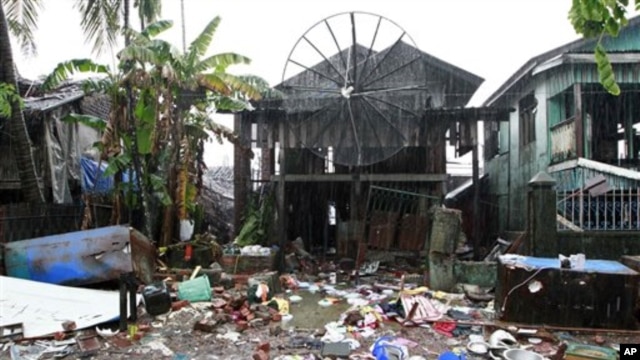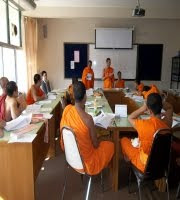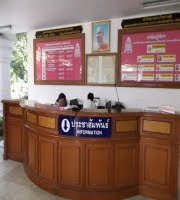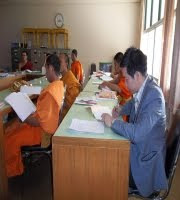Prospectus
Of NAVA NALANDA
MAHAVIHARA , NALANDA
Greeting
I have
been to Nalanda University, located in Rajagha City belonged by King
Bhibbhisara during the lifetime of the lord Buddha. At first, I got some new friends, monks from
Myanmar, and got some general knowledge from them hear say. I read a book about Nalanda university, about
history of its. I feel so happy, due to that I have this chance to know
about events, culture and arts of
university.
I
got note about that as much as I learnt
something from my friends, and books at that university. This is my researching
from that, to let others know like me. I believe in what I am submitting to my
blog sport to show the way for the monks to study Education at that university.
Introduction
Nalanda
Mahavihara was one of the greatest seats
of Buddhist education for nearly seven hundred years the 5th to 12th
century A.D. The word” Nalanda” is derived from “nala” meaning lotus flower,
which is a symbol of knowledge or wisdom and “da” means to give. Nalanda,
therefore, means place to bestow knowledge or wisdom. It is said that 10,000
students and 1500 acariyas resided in Nalanda at one time.
During
the lifetime of the Buddha, Nalanda was an important centre of Dhammic
activity. The Buddha’s chief disciples, Sariputta and Moggallana, came from the
near by villages of Nalika and kulika. The names of several lay followers of
the locality also figured prominently in the literary sources.
According
to early sources, Nalanda was a “Yojana” away from the outskirts of Rajagriha,
the capital of the great Magadhan Empire. The Buddha and his disciples often
stayed for a night in the Pavarika Mango Grove. The Pali literature records
that prince Pavarika constructed a halting place in the grove and donated it to
the Buddha. The Buddha delivered ten Discourses there. On his last journey from
Rajagriha to KUshinagar, the Buddha spent one night at Nalanda.
According
to Taranatha, a Tibetan historian, king Asoka, in the third century B.C,
constructed a stupa at the birth place of Sariputra in the village of Naland.
On his way to Rajagrinha, the Chinese traveler Fa-hein worshipped the stupa,
but he made no reference to Naland or the Mahavihara, perhaps the Buddhist
monastic establishment at that time had not taken a viable shape.
According
to Xuanzang the royal founder of Nalanda Mahavihara was Sakriditya known otherwise as kummar Gupta 1(
415-455-A.D) He laid the foundation of the Nalanda Mahavihara by extablishing a
monastery. With the establishment of the monastery by Kumar Gupta, the site of
Nalanda became important to the Gupta Emperors. The construction was followed
by successive Gupta Emperors.
The
Nalanda Mahavihara was a example of a common phenomenon found in Buddhist
history. Resting places in the form of Arama, orvihara, were originally
intended to provide a night’s stay for wandering monks, which gradually turned
into places of permanent residences for them. In due course Nalanda turned into a place of spiritual learning and
up liftment of education in ancient India for ultimate attainment. For
imparting teachings. These places were naturally transformed into prominent
centers of higher learning.
The
Gupta kings, famous for their love of education, art and culture, bestowed
royal patronage on the Mahavihara. During Harsha’s reign, the famous Chinese
traveler Xuanxang came to Nalanda to study. At that time the Mahavihara reached
the height of its development and was considered a model academic instituation
with a reputation that spread far and wide in East and South East Asia. Many
foreign students came from as far as Korea, Japan, China, and Tibet. The
acariyas or teachers were so learned
that they were often invited by Buddhist countries to assist in the
dissemination of the teachings of the Buddha.
The
cultural legacy of Nalanda was finally taken over by the Pali kings who
promoted the Mahavihara for several centuries. Their contributions are
preserved in the ruins of the ancient university, most of which date back to
the pali period.
Programmes
of the Courses of Study
1.
Certificate Course in Pali
2.
Diploma Course in Pali
3.
B.A Hons. Courser in Pali
4.
M.A
Course in Pali
5.
M.A
Course in Philosophy
6.
M.A
Course in Ancient History, Culture, and Archaeology
7.
M.A
Course in Buddhist Studies
8.
M.A
Course in Sanskrit
9.
M.A
Course in Hindi
10.
M.A
Course in English
11.
Preparatory Course in Tibetan Studies
12.
M.A
Course in Tibetan Studies
13.
Ph.D Course
Researched by Ashin Thuseitta ( Nalanda University- India)






